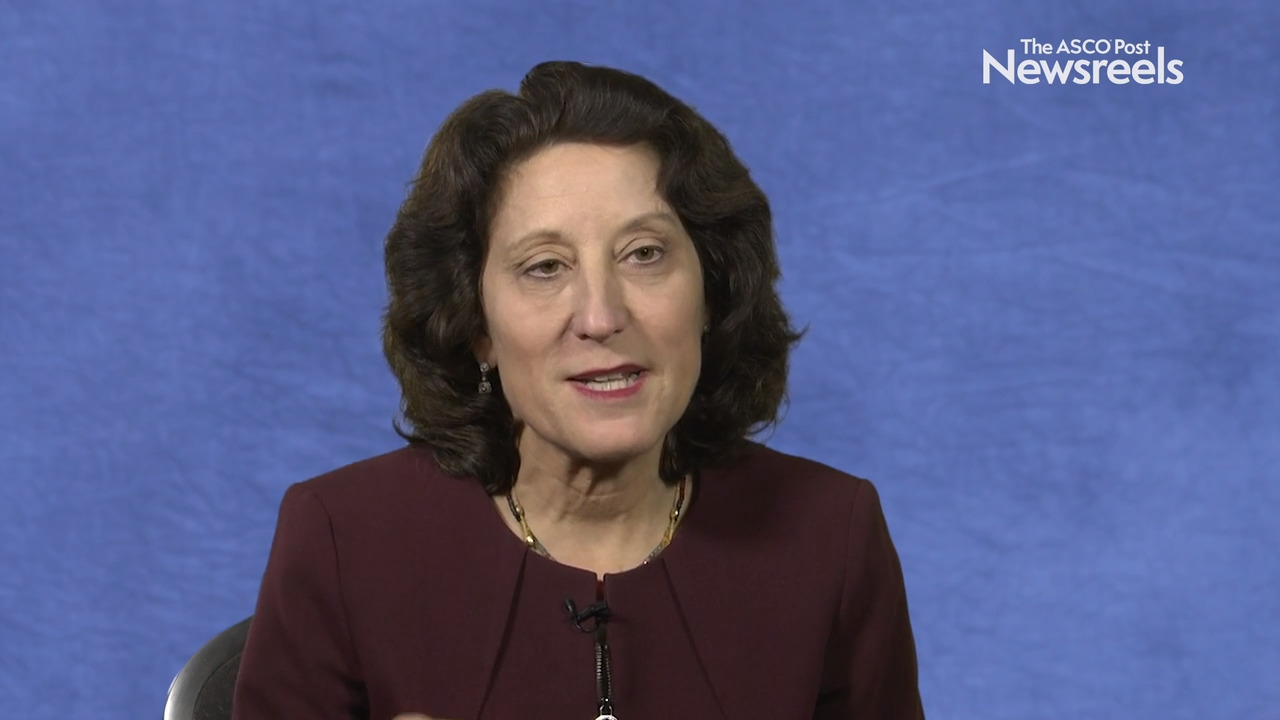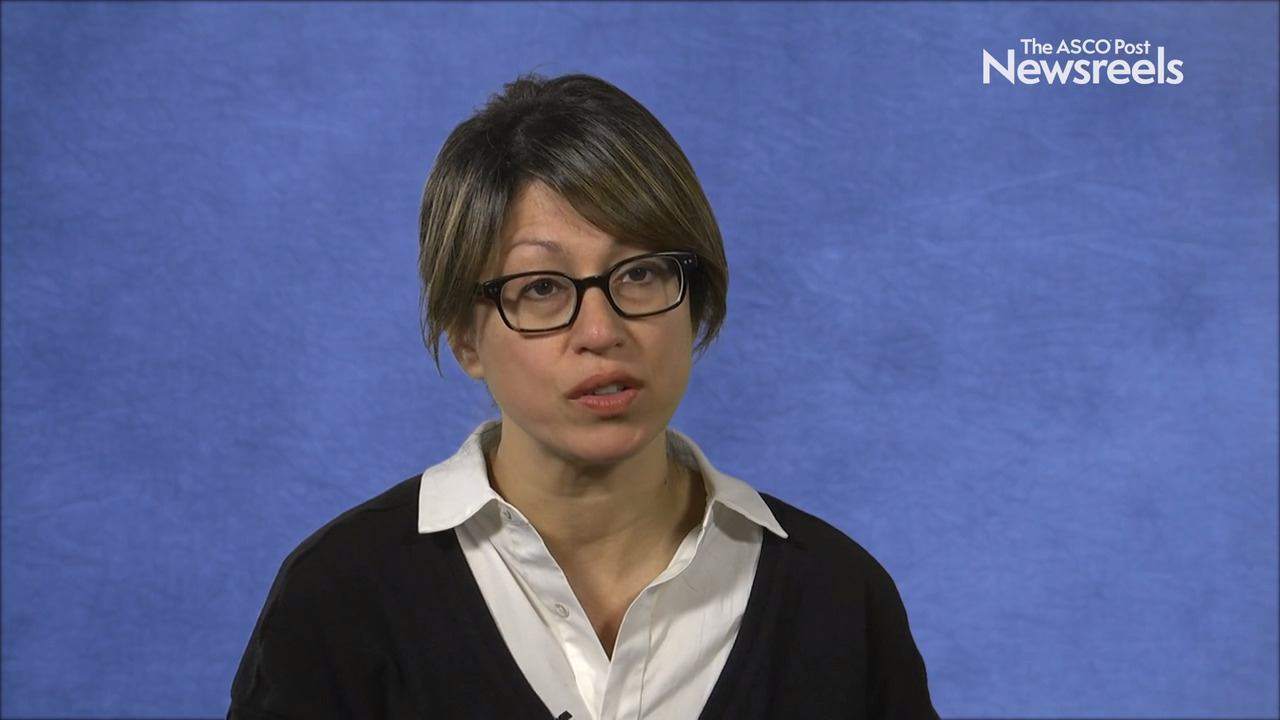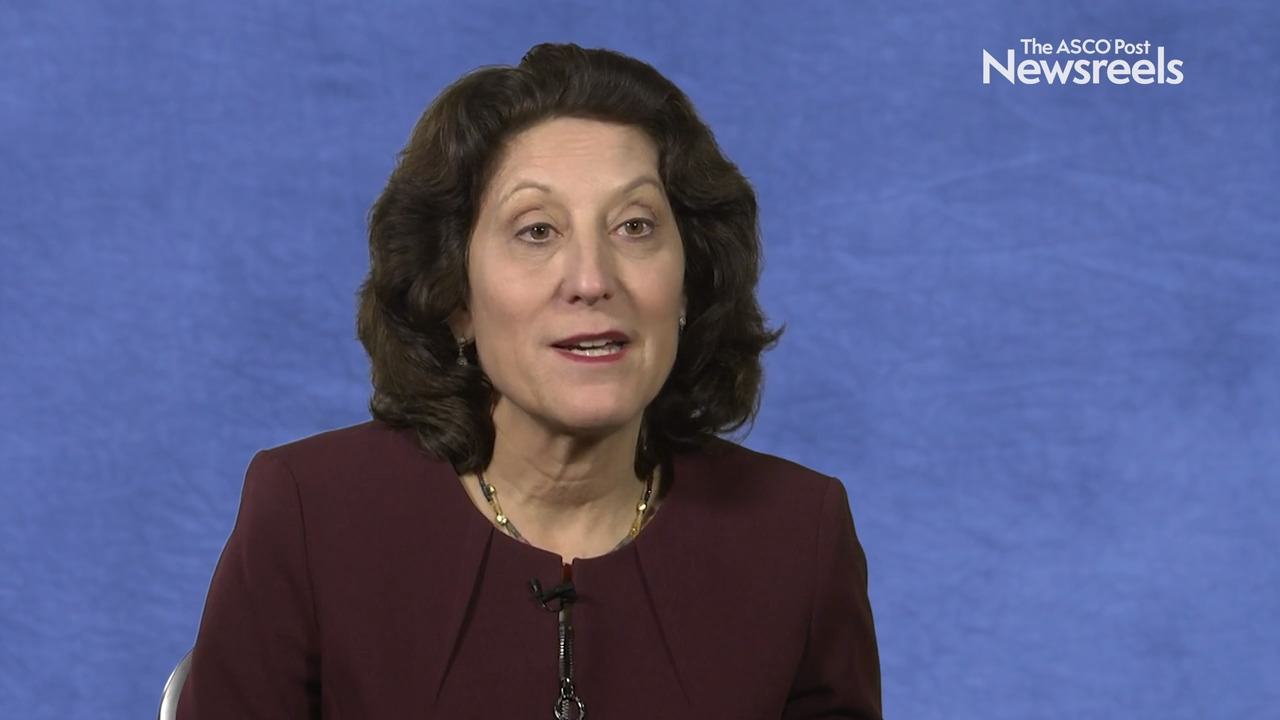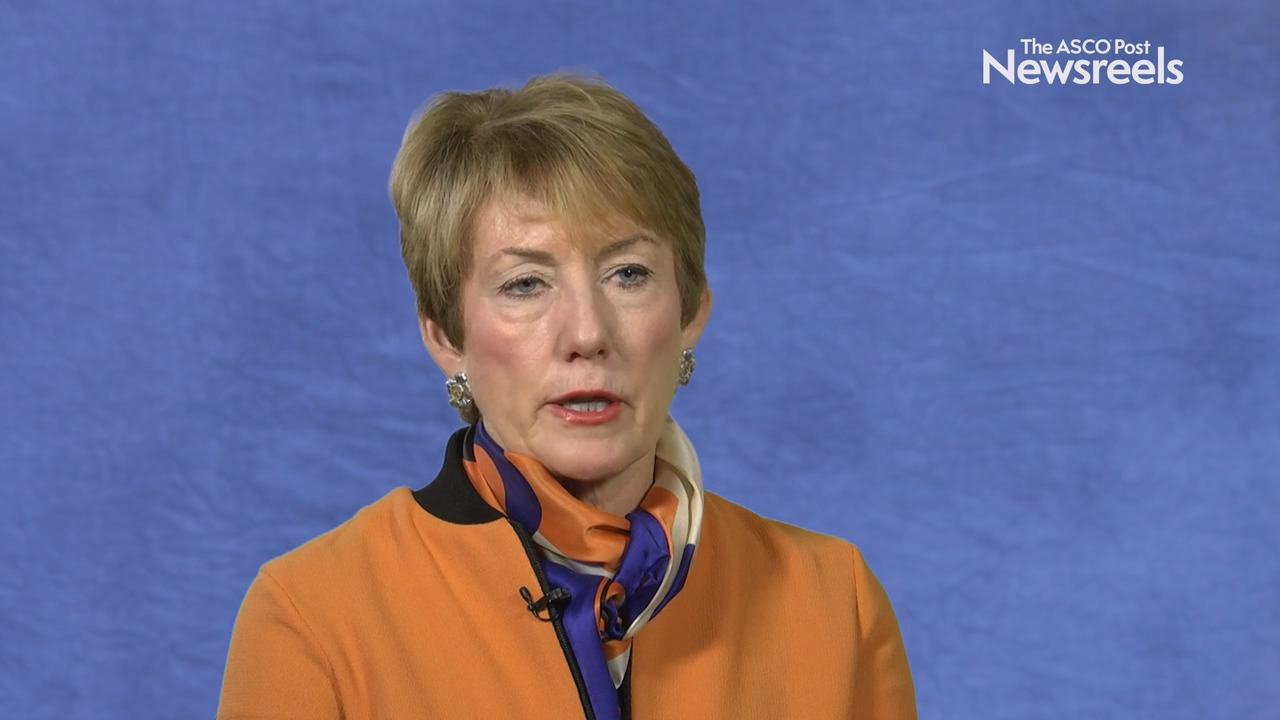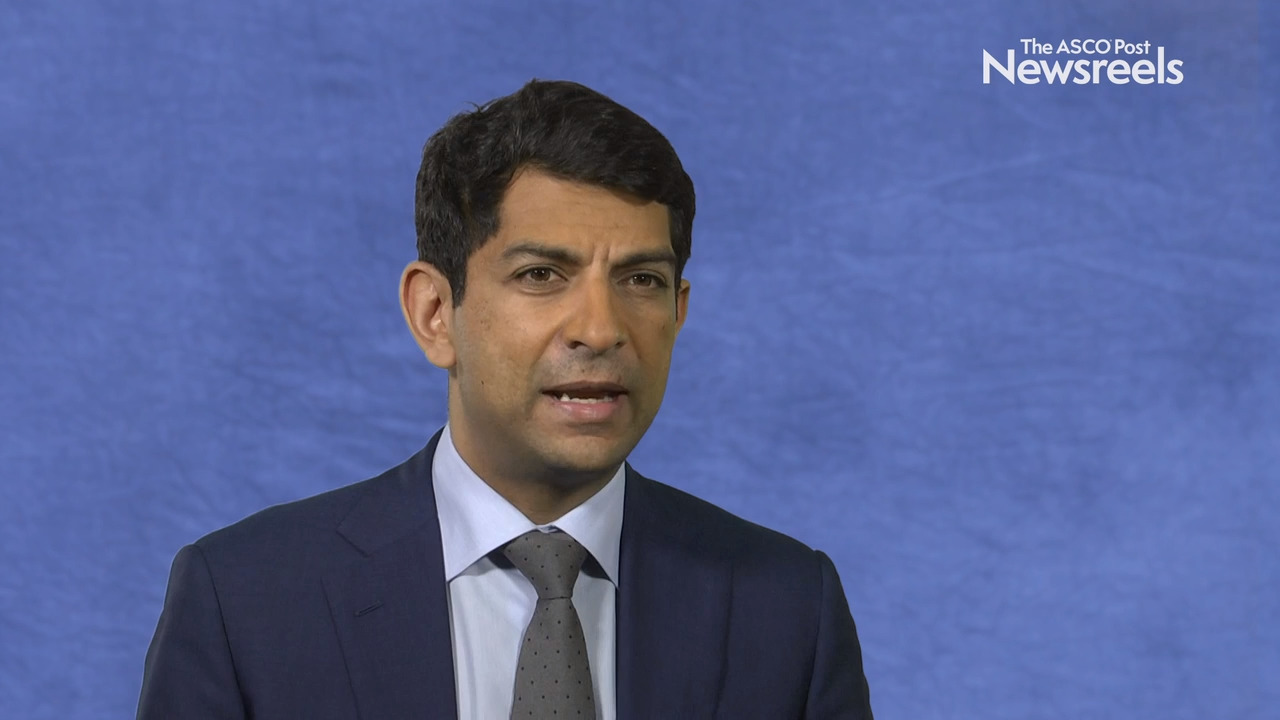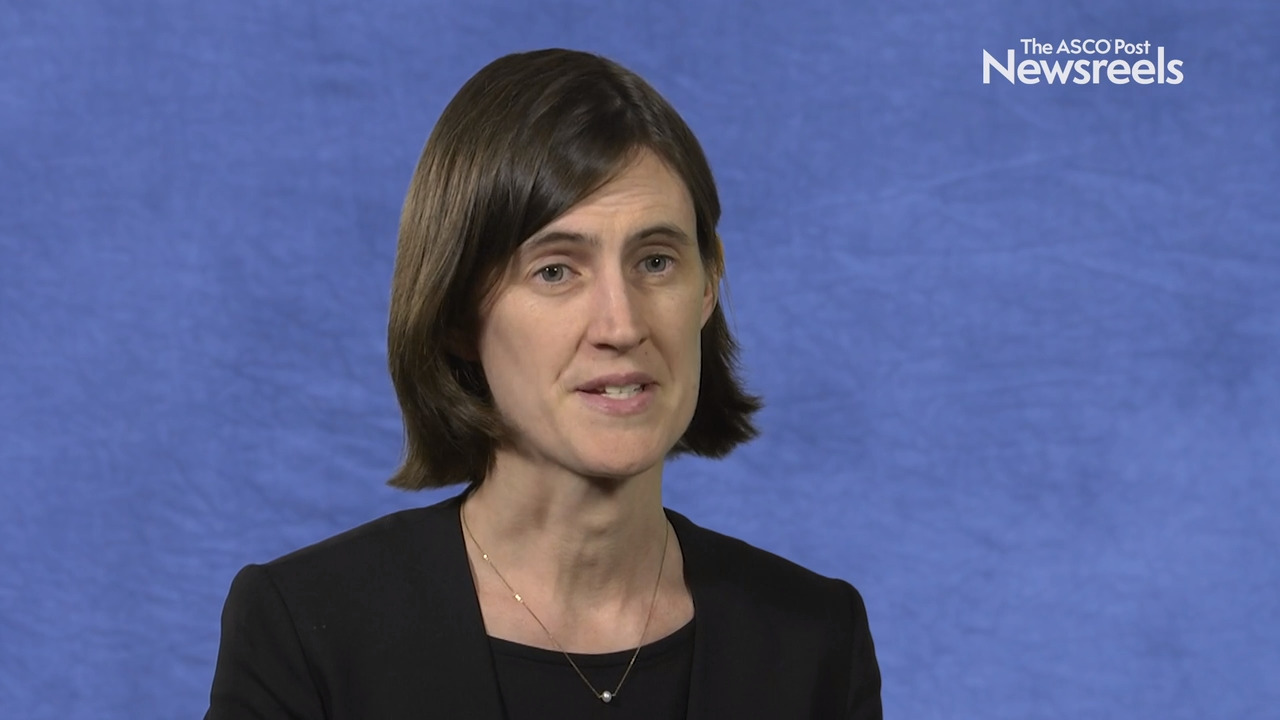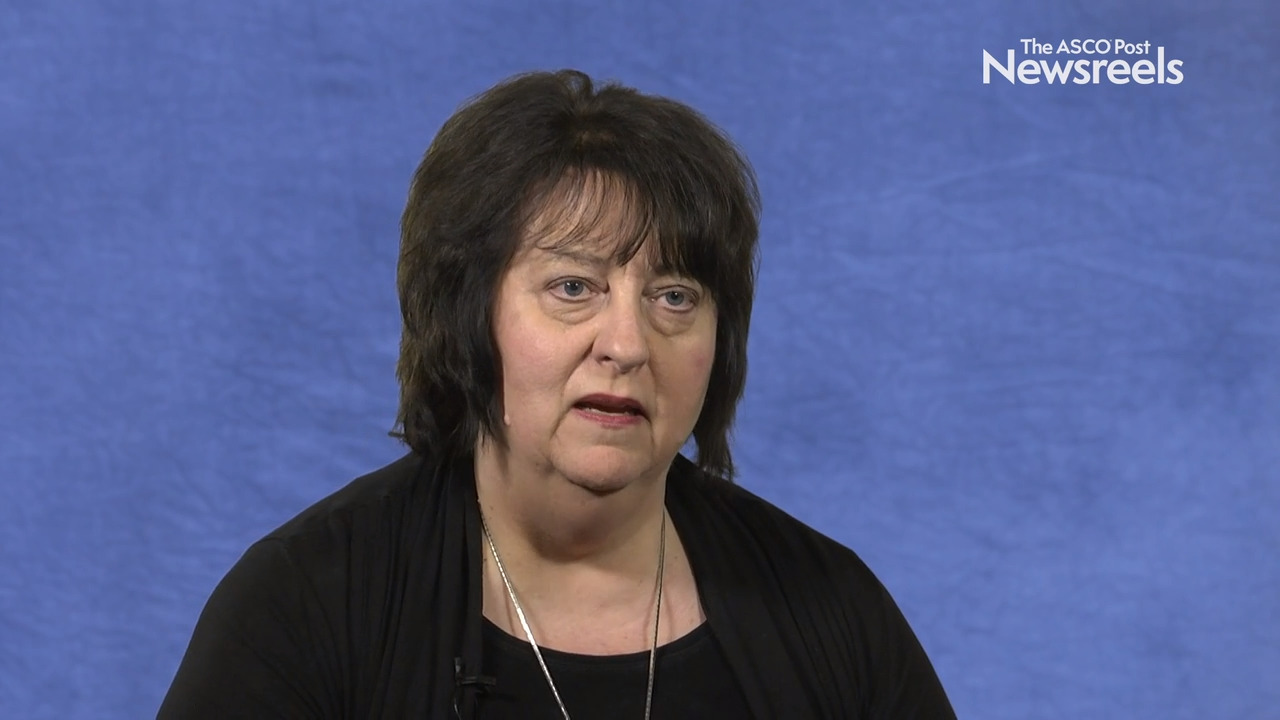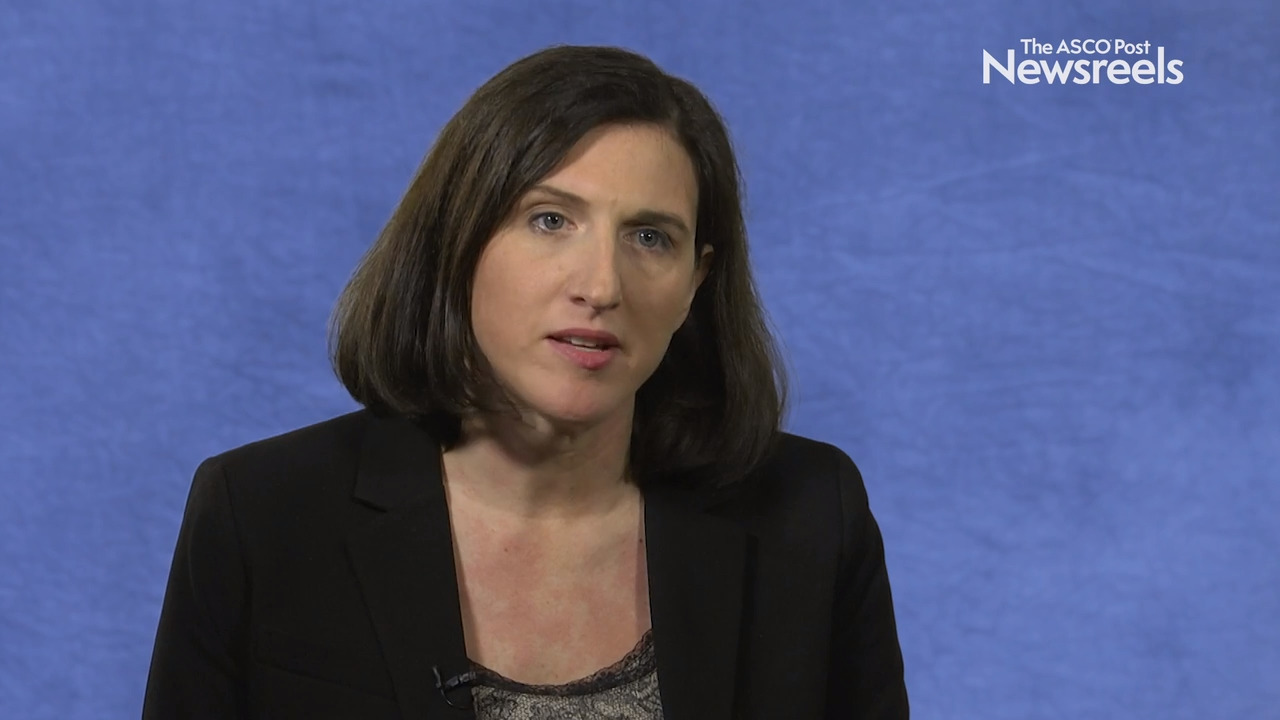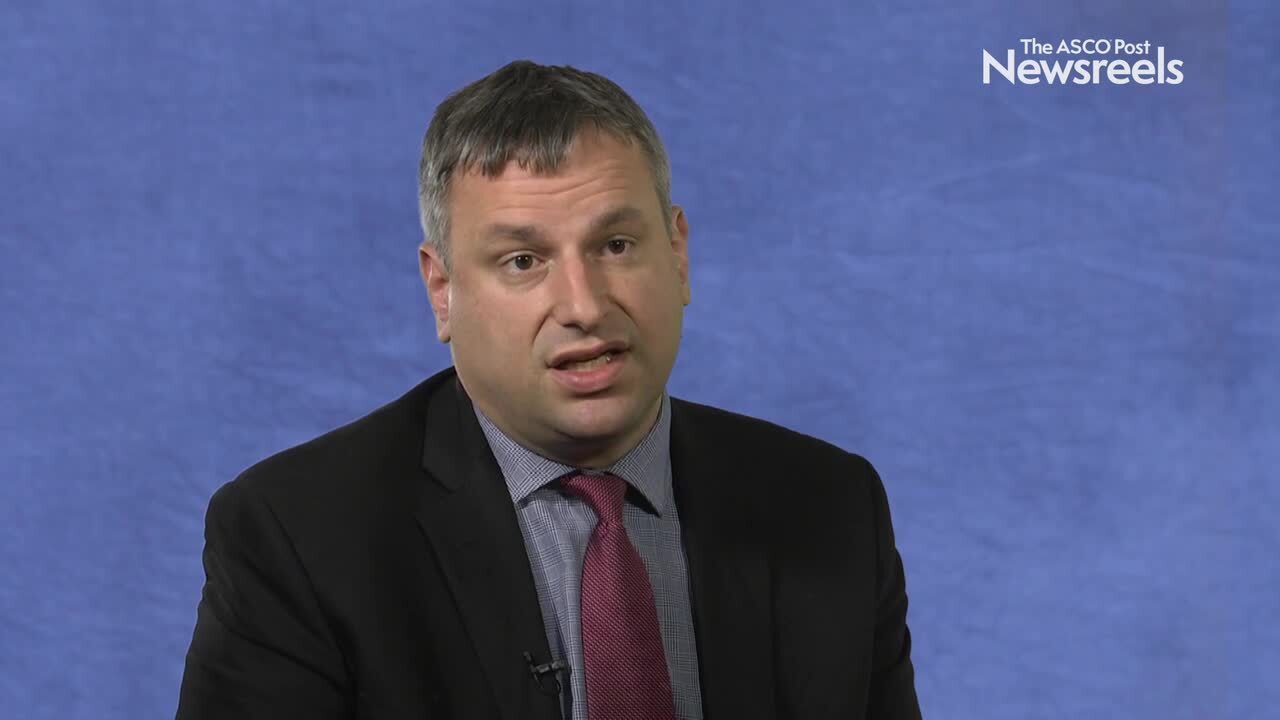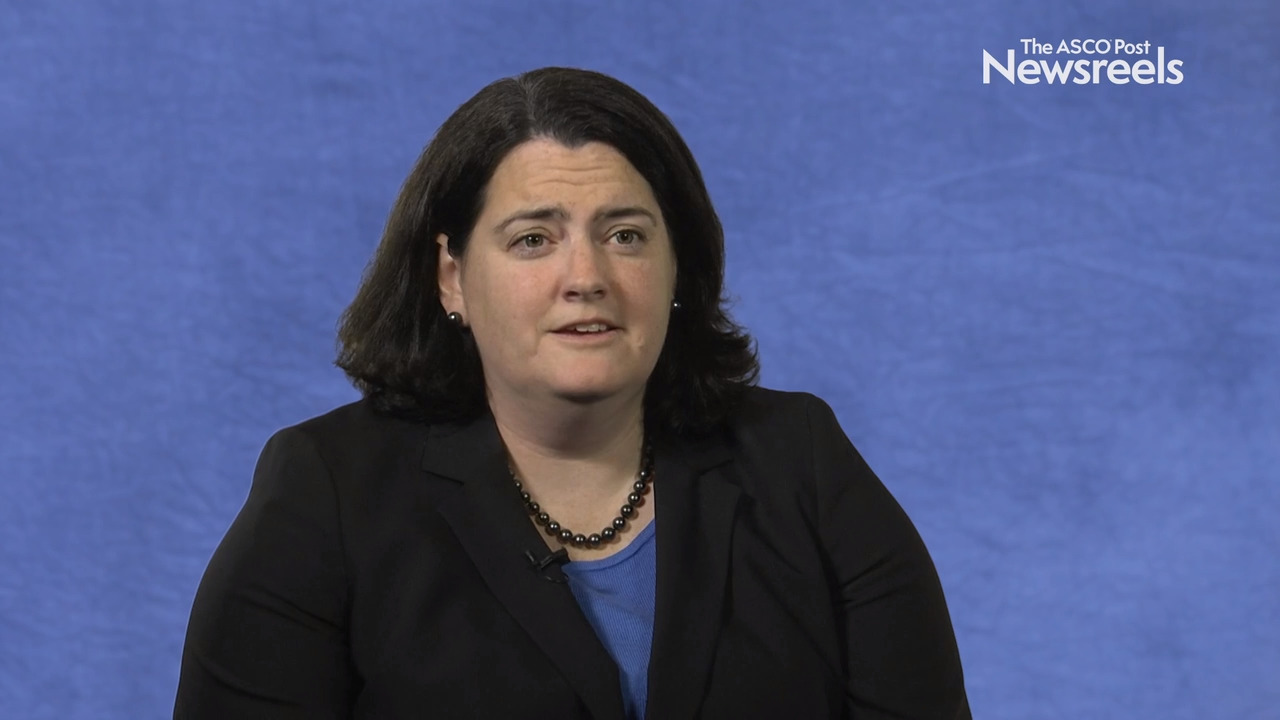Oxybutynin: A Novel Option for Managing Hot Flashes?
OXYBUTYNIN, AN ANTICHOLINERGIC drug approved for the treatment of overactive bladder, reduced the frequency and intensity of hot flashes in women who were suffering frequent hot flashes, including breast cancer survivors who were receiving tamoxifen or aromatase inhibitors. These results of the...
Tumor-Infiltrating Lymphocytes and Prognosis in Early-Stage Triple-Negative Breast Cancer
In a pooled analysis reported in the Journal of Clinical Oncology, Loi et al found that levels of stromally located tumor infiltrating lymphocytes (sTILs) are strongly prognostic in early-stage triple-negative breast cancer, with improved survival observed in patients with higher levels of sTILs...
Expert Point of View: Carlos L. Arteaga, MD
PRESS CONFERENCE moderator Carlos L. Arteaga, MD, Director, Harold C. Simmons Comprehensive Cancer Center, The University of Texas Southwestern Medical Center, Dallas, said that oncologists typically do not test triple-negative breast cancer for basal-like or non–basal-like features....
Role of Adjuvant Capecitabine in Triple-Negative Breast Cancer
ADJUVANT CAPECITABINE added to standard neoadjuvant chemotherapy failed to significantly improve disease-free or overall survival in patients with early triple-negative breast cancer in the large phase III CIBOMA/2004-01_GEICAM/2003-11 (CIBOMA/GEICAM) trial.1 However, extended treatment with...
Expert Point of View: Virginia G. Kaklamani, MD; Monica Morrow, MD; and John Cole, MD
AT THE SAN ANTONIO Breast Cancer Symposium, several breast cancer experts interviewed by The ASCO Post noted that the approved dose of tamoxifen was arbitrarily set, and the optimal dose is actually unknown. Studies of lower-dose tamoxifen, therefore, are welcomed. Virginia G. Kaklamani, MD,...
Low-Dose Tamoxifen Halves Breast Cancer Risk in Women With Preinvasive Breast Lesions
A VERY LOW DOSE of tamoxifen—5 mg/d, given for 3 years rather than 5 years—halved the risk of breast cancer recurrence or new lesions over placebo in women with breast intraepithelial neoplasia, without producing the usual toxicities seen with the standard dose, Italian researchers reported at the...
MRI Background Parenchymal Enhancement and Risk of Breast Cancer
In a population-based study reported in the Journal of Clinical Oncology, Arasu and colleagues found that increased breast magnetic resonance imaging (MRI) background parenchymal enhancement was associated with an increased risk of breast cancer, with risk being independent of breast density. The...
FDA Approves Biosimilar Trastuzumab-dttb
On January 18, the U.S. Food and Drug Administration (FDA) approved trastuzumab-dttb (Ontruzant), a biosimilar referencing trastuzumab, across all eligible indications—namely, adjuvant treatment of HER2-overexpressing breast cancer, metastatic breast cancer, and metastatic gastric cancer or...
Breast Cancer Surveillance Consortium Analysis of Trends in Breast Density Assessment
In a study reported in the Journal of the National Cancer Institute, Sprague et al found that only small changes in the proportions of women found to have dense breasts on digital mammography have occurred with revisions in Breast Imaging Reporting and Data System (BI-RADS) density classification...
BRCA Exchange: Resource Aggregates Data on BRCA Variants
A global resource that includes data on thousands of inherited variants in the BRCA1 and BRCA2 genes is available to the public. The BRCA Exchange was created through the BRCA Challenge, a long-term demonstration project initiated by the Global Alliance for Genomics and...
Neoadjuvant Degarelix vs Triptorelin in Premenopausal Women Receiving Letrozole for Locally Advanced, Endocrine-Responsive Breast Cancer
In a phase II trial reported in the Journal of Clinical Oncology, Dellapasqua et al found that neoadjuvant treatment with the gonadotropin-releasing hormone (GnRH) antagonist degarelix was more effective than the GnRH agonist triptorelin in achieving ovarian function suppression (OFS) in...
Study Assesses Impact of Digital Mammography on Breast Cancer Detection and Recall Rates
The shift from film to digital mammography increased the detection of breast cancer overall in the United Kingdom—without increasing the recall rate—according to a study published by Blanks et al in Radiology. “Image quality with digital mammography is improved over that of...
FDA Approves Trastuzumab-pkrb for HER2-Overexpressing Breast Cancer
On December 14, the U.S. Food and Drug Administration (FDA) approved trastuzumab-pkrb (Herzuma), a HER2/neu receptor antagonist biosimilar to trastuzumab (Herceptin), for the following indications: Adjuvant breast cancer of HER2-overexpressing, node-positive or node-negative (estrogen...
International Trials Present New Findings in Treatment of Breast Cancer
The European Society for Medical Oncology (ESMO) 2018 Congress featured an assortment of study findings, many with far-reaching clinical implications for the treatment of patients with various cancers. Many of these trials were covered in-depth in recent issues of The ASCO Post. Here, we present...
Has Scalp Cooling Reached the Level of Standard of Care?
Does evidence of the effectiveness and safety of scalp cooling to reduce hair loss among women being treated for breast cancer mean that scalp cooling is a new standard of care? “I would suggest that it is,” stated Mikel Ross, MSN, RN, AGNP-BC, of the Breast Medicine Service, Memorial Sloan...
Adjuvant Trastuzumab Emtansine vs Trastuzumab in Patients With HER2-Positive Breast Cancer With Residual Disease After Neoadjuvant Therapy
As reported at the recent San Antonio Breast Cancer Symposium and in The New England Journal of Medicine by von Minckwitz et al, an interim analysis of the phase III KATHERINE trial has shown that adjuvant trastuzumab emtansine (T-DM1; Kadcyla) improved invasive disease–free survival vs...
AI Technology for Digital Breast Tomosynthesis Receives FDA Clearance for Clinical Use
A deep-learning, cancer detection software built on artificial intelligence (AI) called ProFound AI received clearance by the U.S. Food and Drug Administration (FDA) for commercial sales and clinical use in the United States. The announcement was made in a news release from iCAD, Inc., a global...
Disease-Free Survival With Letrozole vs Placebo After Aromatase Inhibitor–Based Therapy in Postmenopausal Breast Cancer
As reported by Mamounas et al in The Lancet Oncology, the phase III NRG Oncology/NSABP B-42 trial has shown no disease-free survival benefit with 5 years of letrozole (Femara) vs placebo after 5 years of aromatase inhibitor–based therapy in women with hormone receptor–positive...
Increased Risk for Breast Cancer After Childbirth May Last More Than 2 Decades
Although parity—time since most recent birth— is recognized as a protective factor against breast cancer, an analysis of data from 15 prospective cohort studies to assess breast cancer risk in relation to recent childbirth has found that compared to women of the same age who had never...
Association Between Pathologic Complete Response After Neoadjuvant Chemotherapy and Breast Cancer Outcomes
A large comprehensive patient-level meta-analysis showed that achieving pathologic complete response after neoadjuvant chemotherapy correlates with significantly improved event-free survival and overall survival in patients with localized breast cancer. These findings were particularly robust in...
KATHERINE Trial: Adjuvant T-DM1 Reduces Invasive Disease Risk by 50% vs Trastuzumab in HER2-Positive Early Breast Cancer
In patients with HER2-positive early breast cancer and residual disease after neoadjuvant chemotherapy, adjuvant treatment with trastuzumab emtansine (T-DM1; Kadcyla) reduced the risk of invasive disease by 50% over trastuzumab (Herceptin).1 The phase III KATHERINE study was presented at the 2018...
Addition of Neoadjuvant Palbociclib to Letrozole in Estrogen Receptor–Positive Early Breast Cancer
In the phase II PALLET trial reported in the Journal of Clinical Oncology, Johnston et al found that the addition of neoadjuvant palbociclib (Ibrance) to letrozole increased rates of complete cell-cycle arrest, reduced apoptosis, and did not significantly improve clinical response rate in patients...
FDA Approves Trastuzumab-pkrb for HER2-Overexpressing Breast Cancer
On December 14, the U.S. Food and Drug Administration (FDA) approved trastuzumab-pkrb (Herzuma), a HER2/neu receptor antagonist biosimilar to trastuzumab (Herceptin), for the following indications: Adjuvant breast cancer of HER2 overexpressing node-positive or node-negative (estrogen...
Palbociclib Plus Fulvestrant in Advanced Breast Cancer: Overall Survival Analysis of PALOMA-3
An overall survival analysis of the PALOMA-3 trial reported by Turner et al in The New England Journal of Medicine found that the addition of the cyclin-dependent kinase 4/6 (CDK4/6) inhibitor palbociclib (Ibrance) to fulvestrant (Faslodex) improved survival among patients with hormone...
RSNA 2018: Mammography Screening Beyond Age 75
Women aged 75 years and older may benefit from continued screening mammograms because of the comparatively high incidence of breast cancer found in this age group, according to a study presented at the Annual Meeting of the Radiological Society of North America (RSNA) (Abstract SSA01-04)....
RSNA 2018: Breast Cancer Risk-Based Mammography Screening in Younger Women
A new, large-scale study of more than 5 million mammograms found that annual mammography screening beginning at age 30 may benefit women with at least 1 of 3 specific risk factors: dense breasts, a personal history of breast cancer, or a family history of breast cancer. The study was presented at...
RSNA 2018: Preliminary Results of Primary Cryoablation in Treating Low-Risk Breast Cancers
Cryoablation has shown early indications of effectiveness in treating women with low-risk breast cancers, according to research presented at the Annual Meeting of the Radiological Society of North America (RSNA) (Abstract SSM01-01). “If the positive preliminary findings are maintained as the ...
Hope S. Rugo, MD, on Metastatic Breast Cancer: Treatment for Pretreated Hormone Receptor–Positive Disease
Hope S. Rugo, MD, of the University of California, San Francisco, discusses how treatment with a lower dose of palbociclib (100 mg vs 125 mg) in combination with fulvestrant or tamoxifen is associated with a lower rate of high-grade neutropenia (Abstract PD2-12).
POEMS/SWOG Intergroup S0230 Study on Preventing Early Menopause
In the long-term follow-up of the Prevention of Early Menopause Study (POEMS)/SWOG Intergroup S0230 trial reported in the Journal of the National Cancer Institute, Moore et al found that the addition of goserelin (Zoladex) to cyclophosphamide-containing chemotherapy was associated with a higher...
FDA Pipeline: New Priority Reviews, Designations, and Clearances, Plus Statements on Genetic Testing and Class Labeling
The U.S. Food and Drug Administration (FDA) recently issued the following new approvals and designations: Priority Review for Atezolizumab in Combination With Chemotherapy for the Initial Treatment of Extensive-Stage SCLC The FDA accepted a supplemental biologics license application...
Management of HER2-Positive Breast Cancer: Business as Usual?
MANAGEMENT OF HER2-positive breast cancer changed after the introduction of trastuzumab (Herceptin), the first anti-HER2 therapy to be approved by the U.S. Food and Drug Administration (FDA) for this type of cancer. Recent studies have more clearly defined the role of pertuzumab (Perjeta) and...
Expert Point of View: Rebecca Dent, MD, and Suzette Delaloge, MD, MSc
FORMAL DISCUSSANT of the ACE trial, Rebecca Dent, MD, of the National Cancer Center in Singapore, commented that the phase II ENCORE 301 study provided proof of concept that a histone deacetylase (HDAC) inhibitor can reprogram epigenetic changes.1 In that randomized, double-blind,...
HDAC Inhibitor May Overcome Endocrine Resistance in Advanced Breast Cancer
EPIGENETIC CHANGES are associated with the development of cancer, and epigenetic therapy is an attractive strategy for targeting the tumor microenvironment. One approach targeted to epigenetic changes is using histone deacetylase (HDAC) inhibition, which has antitumorigenic effects including growth ...
Shanu Modi, MD, on Low HER2-Expressing Breast Cancer: Updated Trial Findings
Shanu Modi, MD, of Memorial Sloan Kettering Cancer Center, discusses study findings from a large phase I study on trastuzumab deruxtecan in patients with low HER2-expressing breast cancer (Abstract P6-17-02).
Hope S. Rugo, MD, on Immunotherapy for Breast Cancer: Expert Perspective
Hope S. Rugo, MD, of the University of California, San Francisco, summarizes a spotlight session she chaired, which included discussion of new immunotherapy drug combinations, predictive factors, and the immune microenvironment.
Monica Morrow, MD, on View From the Trenches: What Will You do on Monday Morning?
Monica Morrow, MD, of Memorial Sloan Kettering Cancer Center reviews lessons learned from top abstracts, including how to tailor the extent of local therapy to minimize morbidity, the diminishing role of axillary lymph node dissection, long-term sequelae of breast surgical procedures, and the need to discuss outcomes with patients.
Shom Goel, MD, PhD, on Breast Cancer: Impact of CDK4/6 Inhibitors on Immunity
Shom Goel, MD, PhD, of the Dana-Farber Cancer Institute, discusses preclinical data that suggest CDK4/6 inhibitors not only stop the growth of breast cancer cells, but also enhance antitumor immunity, a phenomenon that might help improve outcomes for people with advanced disease.
Roisin M. Connolly, MD, on Breast Cancer Treatment Advances in 2018: Expert Perspective
Roisin M. Connolly, MD, of the Sidney Kimmel Comprehensive Cancer Center at Johns Hopkins, discusses clinical trials during the past year on studies on CDK and PI3K inhibitors in estrogen receptor–positive breast cancer and immune checkpoint agents in triple-negative breast cancer.
Reshma Jagsi, MD, DPhil, and Rachel A. Freedman, MD, MPH, on Over- and Undertreatment: Getting It Right
Reshma Jagsi, MD, DPhil, of the University of Michigan, and Rachel A. Freedman, MD, MPH, of Dana-Farber Cancer Institute, discuss the twin challenges of overtreating people with cancer and the missed opportunities and dangers of undertreatment.
Kathy S. Albain, MD, on Breast Cancer, Ethnicity, and Clinical Outcomes: Results From the TAILORx Trial
Kathy S. Albain, MD, of Loyola University Stritch School of Medicine, discusses study findings on race, ethnicity, and patient outcomes in hormone receptor–positive, HER2-negative, node-negative breast cancer (Abstract GS4-07).
Allison Magnuson, DO, on Older Patients With Breast Cancer: A New Tool to Help Guide Treatment Decisions
Allison Magnuson, DO, of the University of Rochester Strong Memorial Hospital, discusses the development of a chemotherapy toxicity risk score that is associated with dose reduction as well as reduced respiratory distress and fewer hospitalizations (Abstract GS6-04).
Roberto A. Leon-Ferre, MD, on Decreasing Hot Flashes: Results From an ACCRU Trial
Roberto A. Leon-Ferre, MD, of the Mayo Clinic, discusses study findings on the effectiveness of oxybutynin in decreasing the frequency and severity of hot flashes (Abstract GS6-01).
Dejan Juric, MD, on Advanced Breast Cancer: Results From the SOLAR-1 Trial
Dejan Juric, MD, of Massachusetts General Hospital, discusses phase III study findings on liquid biopsy–based assessment of PIK3CA mutational status and the combination of the selective PI3K-alpha inhibitor alpelisib plus fulvestrant in the treatment of advanced breast cancer (Abstract GS3-08).
Laura S. Dominici, MD, on Young Women With Breast Cancer: Local Therapy and Quality of Life
Laura S. Dominici, MD, of the Dana-Farber Cancer Institute, discusses the lower quality-of-life scores seen after unilateral or bilateral mastectomy compared with breast-conserving surgery in women younger than age 40 who are treated for breast cancer (Abstract GS6-05).
Judy E. Garber, MD, on Cancer Genetics: Updates for Breast Cancer Care
Judy E. Garber, MD, of the Dana-Farber Cancer Institute, summarizes a special session she moderated, which included discussion of polygenic risk scores, genetic testing in diverse populations, and what to do when presented with moderate-penetrance mutations.
Shoshana M. Rosenberg, ScD, on Quality of Life and the Impact of Breast Cancer Surgery
Shoshana M. Rosenberg, ScD, of Dana-Farber Cancer Institute, discusses her study findings on the lower quality of life associated with mastectomy, and the need for intervention and timely referrals to supportive resources, especially for underserved populations (Abstract GS6-04).
Harold J. Burstein, MD, PhD, and Daniel F. Hayes, MD, on Breast Cancer With Positive Lymph Nodes: Treatment Controversy
Harold J. Burstein, MD, PhD, of the Dana-Farber Cancer Institute, and Daniel F. Hayes, MD, of the University of Michigan Rogel Cancer Center debate whether all women with breast cancer and positive lymph nodes should receive chemotherapy.
SABCS 2018: Oxybutynin for the Management of Hot Flashes in Women Unable to Receive Hormone Replacement Treatment
Treatment with oxybutynin helped reduce the frequency and intensity of hot flashes for women who could not take hormone replacement therapy, including breast cancer survivors, according to the results of a trial presented at the 2018 San Antonio Breast Cancer Symposium by Leon-Ferre et al (Abstract ...
SABCS 2018: SOLAR-1: Liquid Biopsies in Predicting Benefit of Alpelisib in PIK3CA-Mutant Breast Cancer
Liquid biopsy–based assessment of PIK3CA mutational status served as a better indicator of progression-free survival compared with analysis of tissue biopsy in patients with breast cancer enrolled in the phase III SOLAR-1 clinical trial, according to data presented by Juric et al at the 2018...
SABCS 2018: TAILORx Results Show Association Between Clinical Outcomes in Breast Cancer and Race
An analysis of the association between clinical outcomes and race in participants enrolled in the TAILORx trial found that even with equivalent treatments among women with hormone receptor–positive, HER2-negative breast cancer, black women had worse clinical outcomes than white women, despite ...
